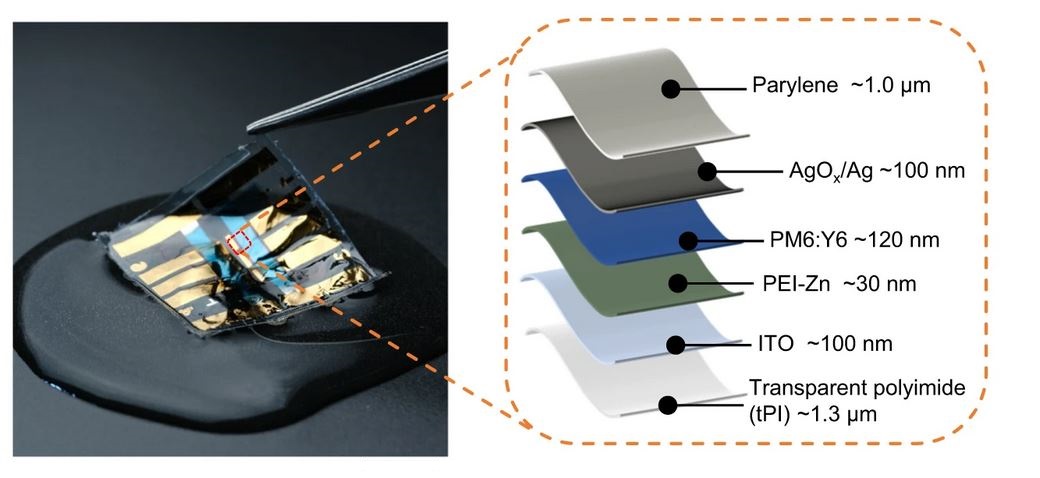Researchers from the Riken Center for Emergent Matter Science in Japan have fabricated a waterproof and flexible organic photovoltaic (OPV) solar cell that can be used in wearable electronics.
The team’s cell consists of an in-situ growth of a hole-transporting layer to strengthen interface adhesion between the active layer and anode. The anode layer, in this case a silver electrode, was deposited directly onto the active layers, and then put through a thermal annealing process, exposing the film to air at 85 degrees celsius for 24 hours. This created better adhesion between the layers than typically found in photovoltaic film, thus improving the waterproofness. Sixing Xiong, the first author of the paper, said via this method, the team was able to create a film that was three micrometers thick.
The researchers recorded a champion efficiency of 14.3% under one sun illumination for their cell, which according to their research paper, “outperforms existing waterproof organic photovoltaics”.
The team then tested their cell by immersing it completely in water for four hours and found it still had 89% of its initial performance. When subjecting the film to stretching by 30% 300 times underwater, it retained 96% of its performance. The cell was then put through a washing machine cycle and survived, which according to the research paper, is something that has never been reported before for such a thin encapsulation layer.
“The efficiency degradation was limited to just 10% even after subjecting the devices to two washing cycles in a washing machine, each lasting 66 min,” the scientists stated. “These organic photovoltaics offer remarkable stretchability and waterproof properties even with such thin structure, making them well-suited for wearable electronics.”
Kenjiro Fukuda, one of the corresponding authors of the paper, said the team created a method that can be used more generally. “Looking to the future, by improving the stability of devices in other areas, such as exposure to air, strong light, and mechanical stress, we plan to further develop our ultrathin organic solar cells so that they can be used for really practical wearable devices,” he said.
The full findings are available in the study “Waterproof and ultraflexible organic photovoltaics with improved interface adhesion,” published in Nature Communications.
In 2022, another research group at Riken developed heat-shrinkable polymers that can be used to laminate organic photovoltaic devices onto curved surfaces.
This content is protected by copyright and may not be reused. If you want to cooperate with us and would like to reuse some of our content, please contact: editors@pv-magazine.com.




4 comments
By submitting this form you agree to pv magazine using your data for the purposes of publishing your comment.
Your personal data will only be disclosed or otherwise transmitted to third parties for the purposes of spam filtering or if this is necessary for technical maintenance of the website. Any other transfer to third parties will not take place unless this is justified on the basis of applicable data protection regulations or if pv magazine is legally obliged to do so.
You may revoke this consent at any time with effect for the future, in which case your personal data will be deleted immediately. Otherwise, your data will be deleted if pv magazine has processed your request or the purpose of data storage is fulfilled.
Further information on data privacy can be found in our Data Protection Policy.